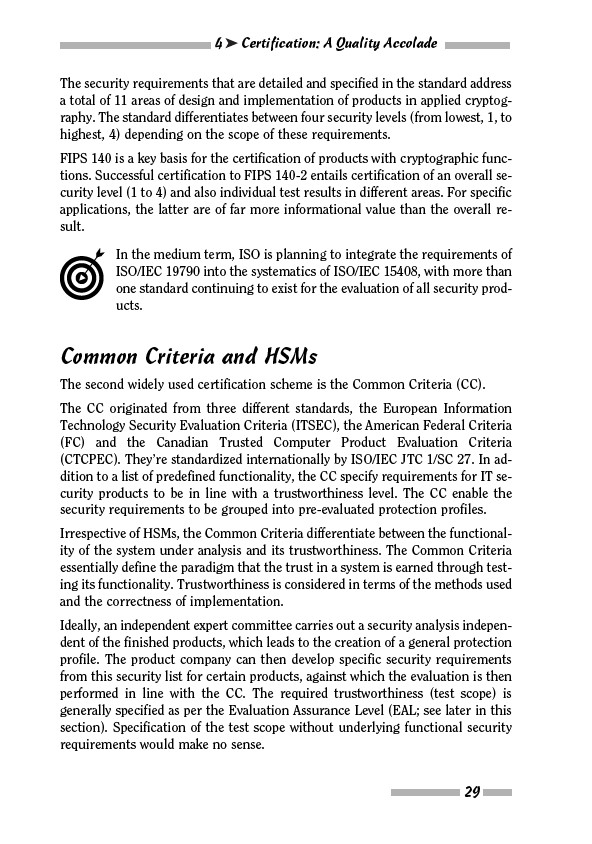
4 Certification: A Quality Accolade
The security requirements that are detailed and specified in the standard address
a total of 11 areas of design and implementation of products in applied cryptography.
The standard differentiates between four security levels (from lowest, 1, to
highest, 4) depending on the scope of these requirements.
FIPS 140 is a key basis for the certification of products with cryptographic functions.
Successful certification to FIPS 140-2 entails certification of an overall security
level (1 to 4) and also individual test results in different areas. For specific
applications, the latter are of far more informational value than the overall result.
In the medium term, ISO is planning to integrate the requirements of
ISO/IEC 19790 into the systematics of ISO/IEC 15408, with more than
one standard continuing to exist for the evaluation of all security products.
Common Criteria and HSMs
The second widely used certification scheme is the Common Criteria (CC).
The CC originated from three different standards, the European Information
Technology Security Evaluation Criteria (ITSEC), the American Federal Criteria
(FC) and the Canadian Trusted Computer Product Evaluation Criteria
(CTCPEC). They’re standardized internationally by ISO/IEC JTC 1/SC 27. In addition
to a list of predefined functionality, the CC specify requirements for IT security
products to be in line with a trustworthiness level. The CC enable the
security requirements to be grouped into pre-evaluated protection profiles.
Irrespective of HSMs, the Common Criteria differentiate between the functionality
of the system under analysis and its trustworthiness. The Common Criteria
essentially define the paradigm that the trust in a system is earned through testing
its functionality. Trustworthiness is considered in terms of the methods used
and the correctness of implementation.
Ideally, an independent expert committee carries out a security analysis independent
of the finished products, which leads to the creation of a general protection
profile. The product company can then develop specific security requirements
from this security list for certain products, against which the evaluation is then
performed in line with the CC. The required trustworthiness (test scope) is
generally specified as per the Evaluation Assurance Level (EAL; see later in this
section). Specification of the test scope without underlying functional security
requirements would make no sense.
29